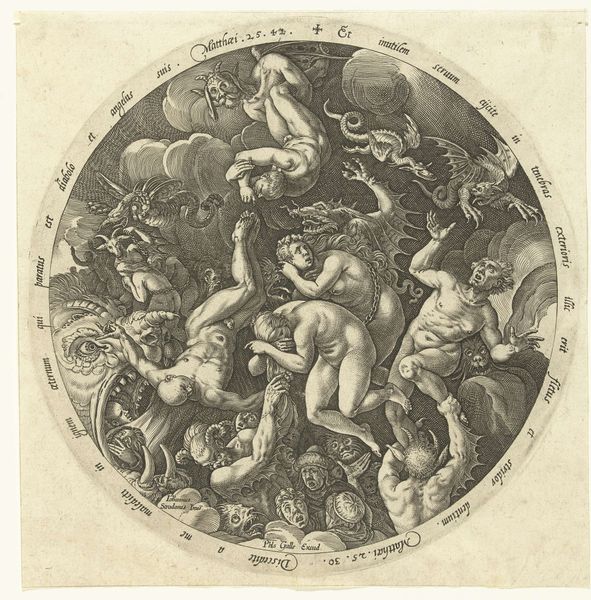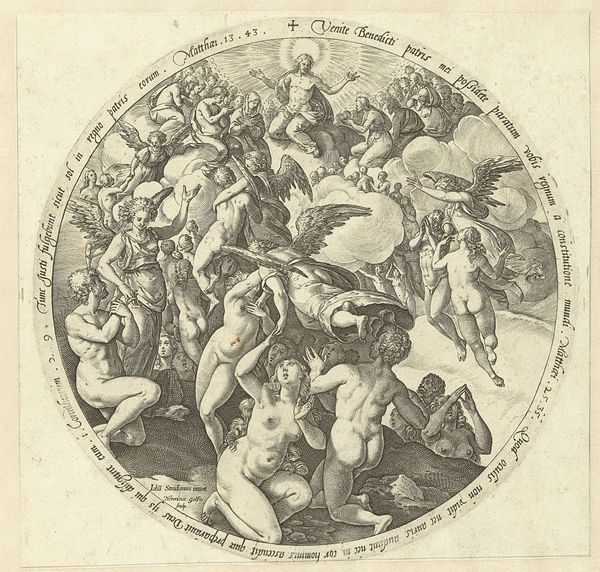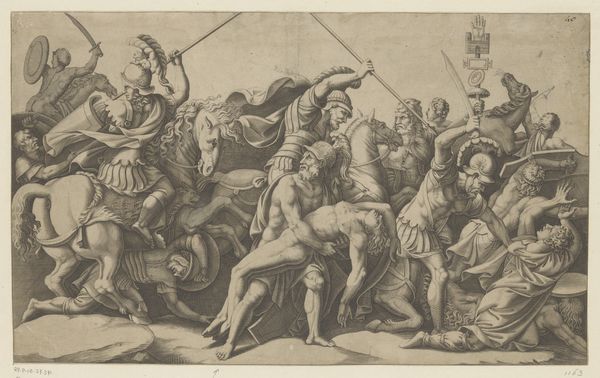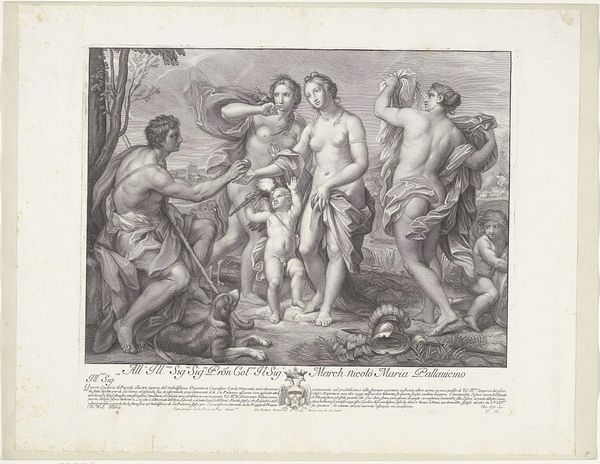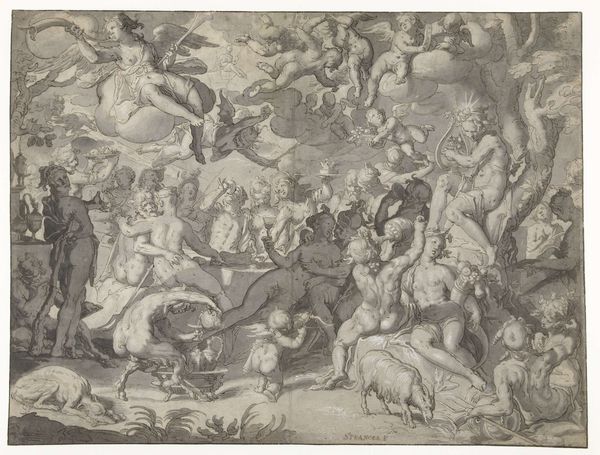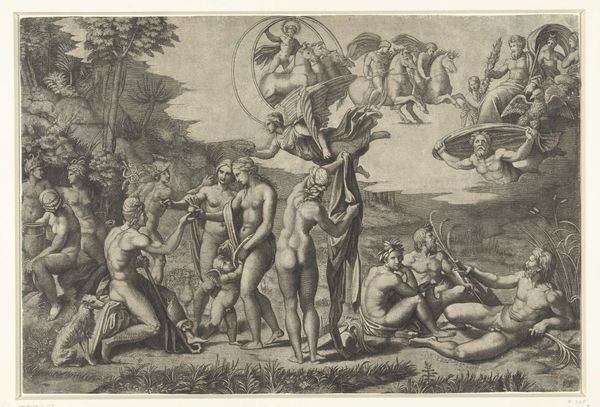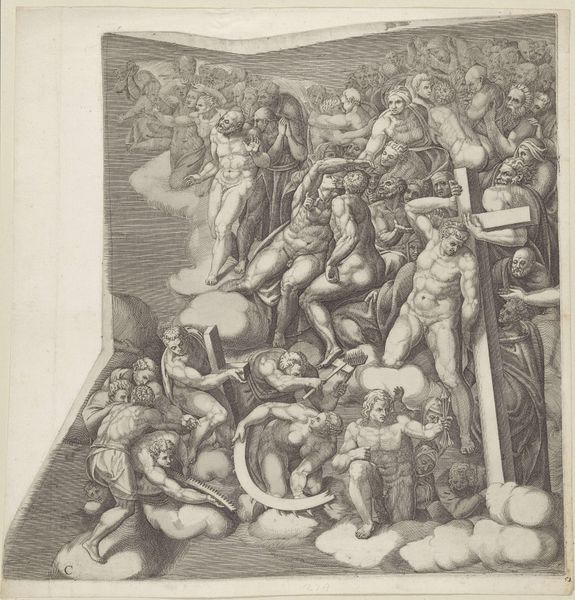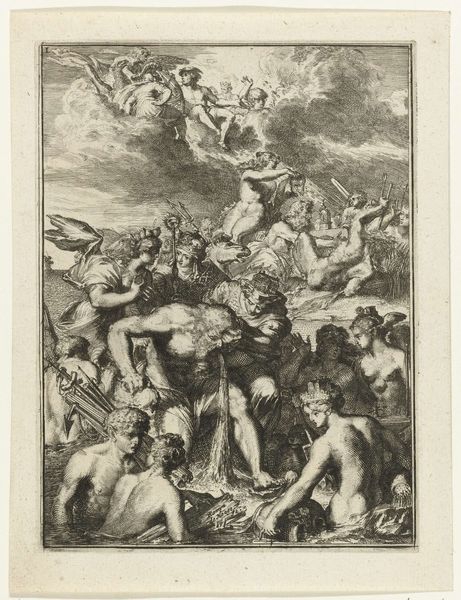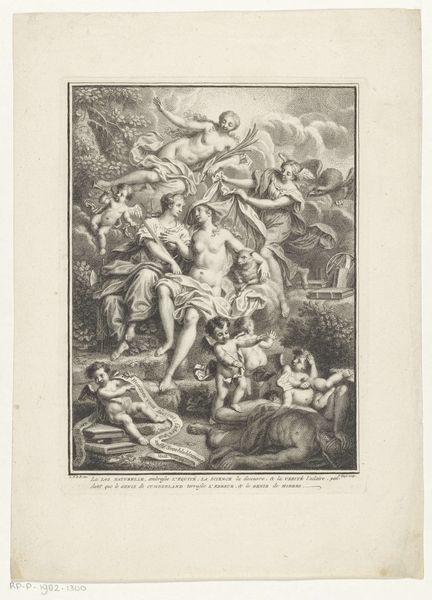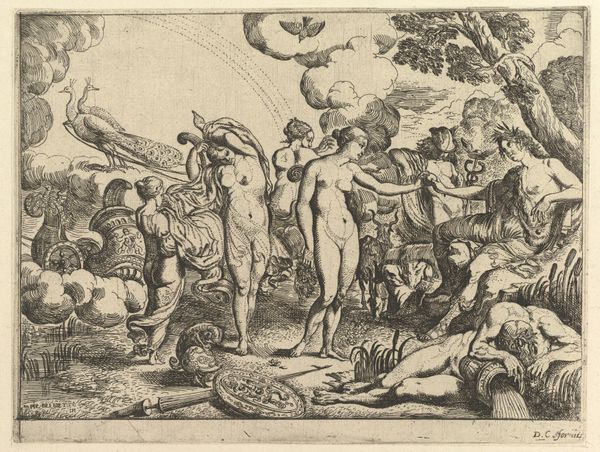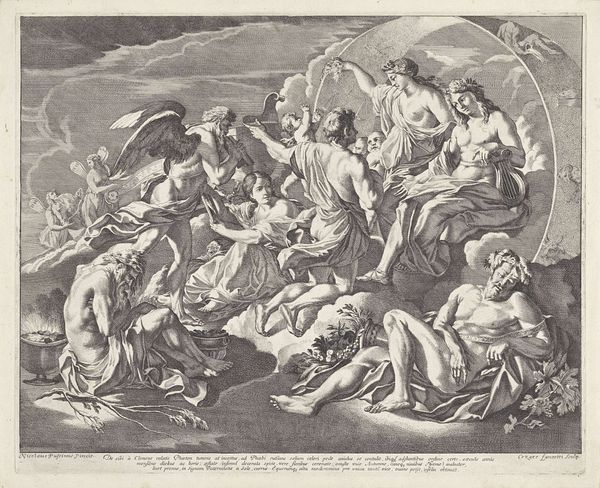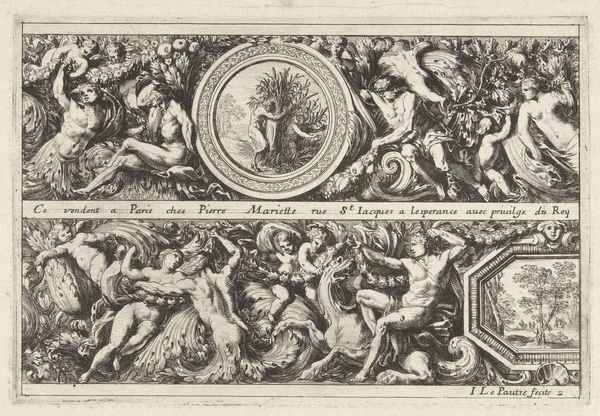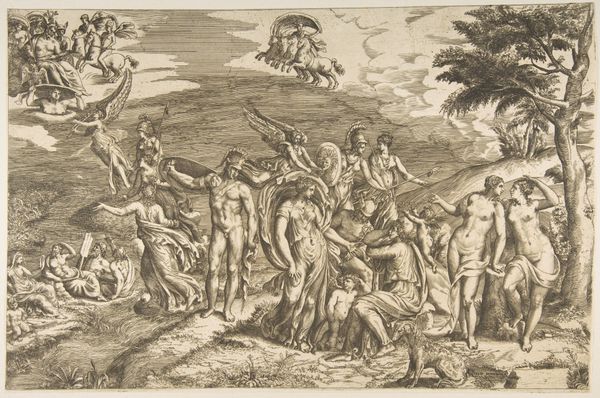
engraving
#
allegory
#
pen drawing
#
figuration
#
line
#
history-painting
#
northern-renaissance
#
engraving
Copyright: Rijks Museum: Open Domain
Curator: Hendrick Goltzius produced this engraving, "The Blessed Separated from the Damned," between 1575 and 1579. The Rijksmuseum holds this print as part of its collection. What’s your initial take on it? Editor: Well, it's immediately striking. The composition is quite dramatic, chaotic even, but in a controlled, circular way. There's a definite sense of judgment and division being portrayed, the upper ethereal part is almost blinding in light. The lower portion is filled with suffering bodies. Curator: It certainly encapsulates a prevailing Renaissance preoccupation with judgment and morality. Goltzius, known for his mastery of line, effectively uses engraving to delineate these two distinct realms: salvation and damnation. We see, in essence, a visualization of divine judgment as described in the Bible. Editor: Precisely. And that division feels intensely charged. It is not just about personal morality but a broader commentary on power, authority, and the social order of the time. Look at the angles: some are angelic figures directing others. Curator: Consider how Goltzius, despite working within the confines of religious allegory, also mirrors societal anxieties. The print served not just as a didactic tool, but as a reflection of a culture wrestling with profound questions about faith, justice, and the afterlife in post reformation society. Editor: Definitely. I also wonder about the figures. They're naked, vulnerable. Stripped of their earthly identities and possessions, all are brought face to face with a power that determines their fate, evoking questions of inherent justice versus power structures of fate and circumstance. It compels us to consider themes like marginalization, dispossession, and even resistance. Curator: Ultimately, Goltzius gives us a tangible, if allegorical, lens to understand a period marked by religious strife and burgeoning humanist thought, reflecting on art’s intrinsic function as an interpreter of socio-political undercurrents. Editor: Right, it prompts us to grapple with these persistent moral quandaries while situating it within a historical continuum of struggle. Goltzius' vision prompts introspection on these timeless themes that continue to affect current sociopolitical discussions around fairness, equality, and judgment in our own society.
Comments
No comments
Be the first to comment and join the conversation on the ultimate creative platform.
